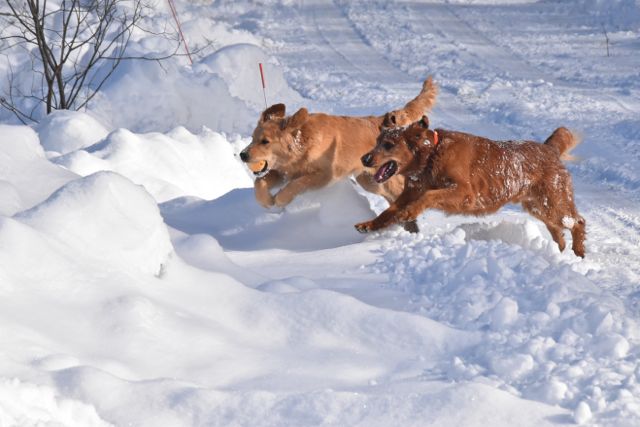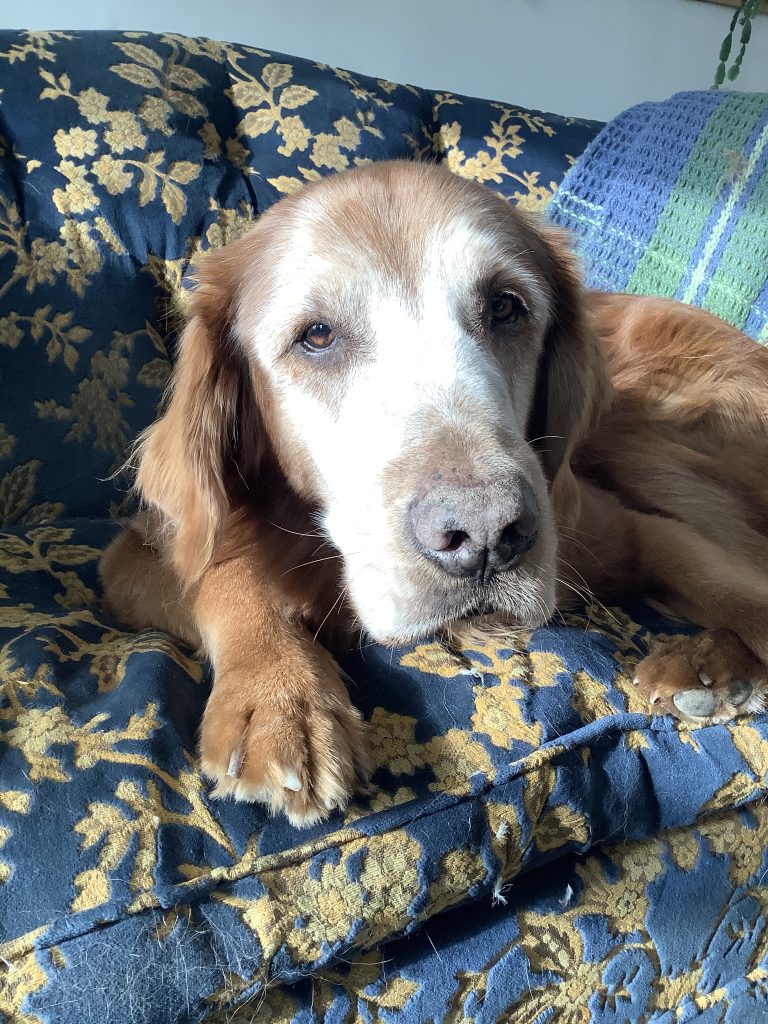

Tulliver came to us as a rescue looking for a new home. He immediately bonded with my soul dog, Tadcaster, who was coming out of remission with an aggressive variant of malignant lymphoma. Both red dogs thrived on the relationship, with Tadcaster seeming to take the younger dog under his wing. When Tulliver was having a difficult time getting a cottage cheese container to hold still so he could reach the few remaining treats at the bottom, Tadcaster took the container from him, demonstrated how to use paws to keep it in place, then nosed the treat back to Tulliver. Tulliver would then emulate the older dog.
The two red dogs were inseparable in the three months before Tadcaster lost his battle with cancer. Both were driven to capture errant tennis balls and Frisbees, were much more athletic than my blonde dogs, and tended to listen to me but not my wife.



With Tadcaster gone, Tulliver noticed there were two other dogs in the house. He played with them, but became much more focused on me. His goofy side came out, and still grieving from Tadcaster’s loss, I cherished the similarities in the two dogs. I try never to compare dogs, as each has his or her own personality and it’s unfair to expect a newcomer to compete with a ghost, but in this case it was easy to love Tully as he had adopted so many of the traits I held dear.
I decided to give Tulliver a sidecar tryout. He did okay, but clearly his interest was in being with me and he found no joy in the ride. Where Barley found the world around him endlessly fascinating, Tulliver was simply bored, waiting not so patiently for the next opportunity to chase a ball.



He cuddles well, sleeping stretched out by my side on the bed, but Tulliver is essentially a ball fanatic. He will retrieve it till my arm is too tired to throw, then happily chew it for hours.







June 2021: After a long life full of love and adventure, my big red dog crossed the Rainbow Bridge while I was out west with Glenlivet in the sidecar. He had multiple issues associated with his early neutering (a shelter had him neutered at only four months of age), including multiple myeloma, a cancer rare in dogs. The typical progression of that disease is repeated infections, usually pneumonia, coupled with osteoporosis eventually resulting in fractures. I knew before setting out on our latest adventure that Tulliver’s days were numbered, but thought he had months remaining. Sadly, it turns out he also had hemangiosarcoma, a much more aggressive form of cancer. On the day Glenlivet and I reached Lake Tahoe, the tumor on his spleen ruptured and he began bleeding internally. My wife held her phone to his ear in the vet’s office so my tearful words of love would be the last thing he heard before crossing over.
He would watch me for hours, my gift of devotion. I still feel his gaze and regret that I wasn’t there to hold him in the end. Tulliver was the first of my dogs to pass without feeling my caress…

